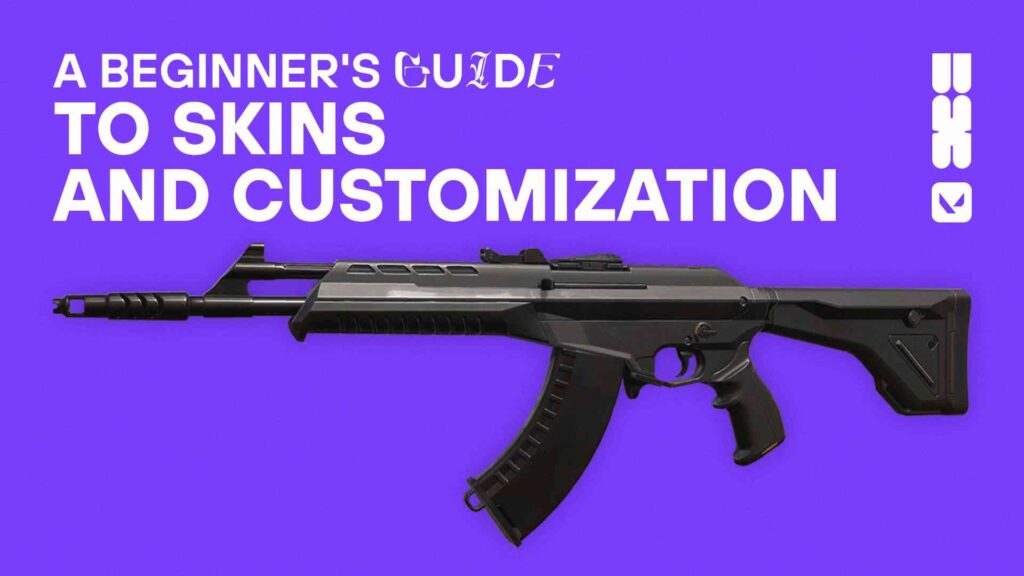Contents
What Are Valorant Skins?
Valorant is a well-known first-person shooter game that offers players various cosmetic options to modify their in-game experience. These cosmetics, called skins, can change the appearance of a player’s weapons, giving them a unique and personalized look. Players can purchase these skins from the store using Valorant Points or upgrade them with Radianite Points, enhancing the skin’s appearance. Skins are also available as part of Valorant’s exclusive Contracts or Battle Passes.
Skins in Valorant distinguish between agent skins and weapon skins. Agent skins are specific to a particular agent, and players can obtain them by playing through the agent’s contracts. General skins, on the other hand, can be worn by all agents. Players can purchase them with in-game currency. These skins are not always available, and new offers are posted daily in the central hub rotation. Some skins are also part of Valorant skin bundles and can be purchased with Radianite Points.
In addition to weapon skins, Valorant offers other types of cosmetic items that can modify various aspects of a player’s experience in the game. These include Gunbuddies, small weapon charms that attach to the side of a weapon; Player Cards that change other elements of a player’s profile; Player Titles that appear below a player’s name; Sprays that can be used before, during, and after a round; and finally, Weapon Skins themselves, which change the appearance of a weapon.
Types of Skins
- Weapon Skins
- Melee Skins
- Player Cards
- Gun Buddies
- Sprays
- Titles
Skin Tiers
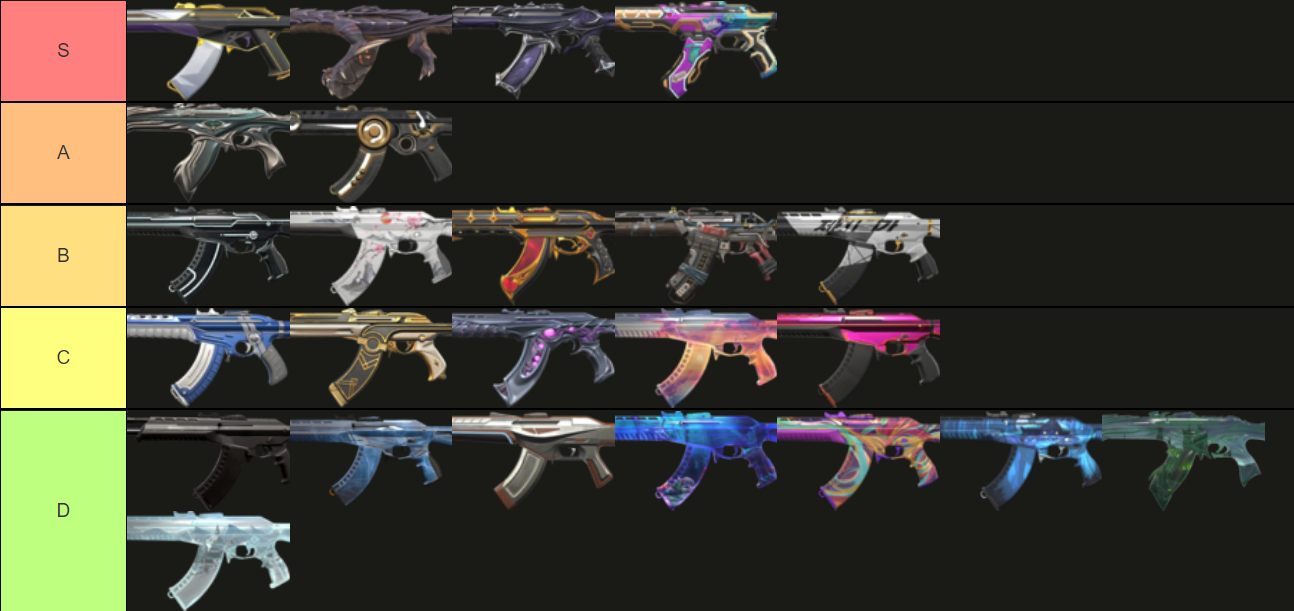
Valorant determines the quality and style of skins by skin tier, with higher level meaning better looking and more feature-packed skins. The skin tiers in Valorant are also referred to as price tiers, as higher prices typically represent higher tiers. In this article, we will explore each of the five skin tiers in Valorant and what they have to offer players.
The first skin tier in Valorant is the Select skin tier. These are the cheapest skins in the game, with prices starting at 875 VP per weapon skin and 1750 VP per melee skin. Select skins are basic reskins with limited visual effects. They are designed to be accessible to all players and are available as part of the Battle Pass. An example of a Select skin is the Smite Skin Collection.

Next is the Deluxe SkinTier, which represents the low-end weapon skins in Valorant. These skins cost 1275 VP per weapon skin and 2550 VP per melee skin. The Deluxe skins typically don’t include animations or sound effects, though some may have a simple green screen-like effect. The Silvanus Skin Collection is an example of a Deluxe Skin.
The Premium Skin Tier in Valorant is where the better-looking skins start to appear. These skins are priced at 1775 VP per weapon skinand 3550 VP per melee skin and come with animations and sound effects. The Xenohunter skin collection is an example of Premium skin.
TheExclusive SkinTier is where you will find the best and most expensive skins in Valorant. Their prices range from 2175-2675 VP per weapon skin and 4350-5350 VP per melee skin. Exclusive skins feature the best animations, sound effects, and pull-out animations, effectively making them new weapons. The RGX Skin Collection is an example of Exclusive skins.
Finally, the Ultra Skin Tier is the most expensive skin tier in Valorant, with prices starting at 2475 VP per weapon skinand 4950 VP per melee skin. Ultra skins are feature-packed, with animations and voice effects that are out of this world. An example of Ultra skins is the Protocol Skin Collection.

Another matter is the actual price in dollars. Let us start by defining the price range.
- Select Edition ‘ $10 per separate skin and $41 per bundle.
- Deluxe Edition ‘ $16 per particular skin and $62 per bundle.
- Premium Edition ‘ $23 per specific skin and $82 per bundle.
- Ultra Edition ‘ $30 per special skin and $119 per bundle.
- Exclusive Edition ‘ price differs.
How To Get And Trade Skins In Valorant
Valorant has a system of unlocking cosmetic items through gameplay and purchasing them in the in-game shop. The methods, in short, are
- Agent Contracts. Reaching Tier 10 allows players to earn an agent-specific weapon skin.
- Battle Passes Valorant releases a new Battle Pass with each Act, which includes exclusive skins for 13 weapons. These skins come in three skin collections that follow the Act’s Battle Pass theme.
- In-Game Shop: Skins can also be purchased from the in-game shop using Valorant Points as the main currency.
- Night market: The Night Market is a regular store elongation that offers players another way of acquiring weapon skins, except for the standard daily offers and bundles.
- EXP System: Players can also earn skins by completing daily missions and contracts through the EXP system.
Let’s take a closer look at each one:
Agent Contracts are a way to unlock Agent Skins by reaching Tier 10. Players can gain EXP for a specific Agent contract by choosing it as their active “goal” and completing daily missions to boost their EXP gain.
Battle Passes are another way to obtain exclusive skins for weapons. Each Act has a new Battle Pass with skins for 13 weapons, all themed for the Act and divided into three skin collections.
In-Game Shop purchases are the most straightforward way to get skins. Players can purchase skins with Valorant Points from the in-game shop, which they can access by topping up their game wallet in the Valorant Point Shop. The offers available in the in-game store change regularly, so players should keep an eye out for new skins and bundles.
Night Market

The Valorant Night Market deserves a bit more attention. It is an event that occurs once a month where players can purchase exclusive weapon skins at discounted prices.
The Night Market offers six randomly generated skins for players to purchase, including two old skins that can be traded for a discounted price.
Accessing the Valorant Night Market is easy, as players will receive a prompt on the left-hand side of the main menuonce the market is open. From there, players can navigate to the shop to view their available skins for the month. It’s worth noting that once the Night Market closes, returning to the shop can be difficult as the prompt often disappears. Players can access the Night Market by clicking on the tarot-looking card in the upper right corner of their screen, next to the Shop tab.
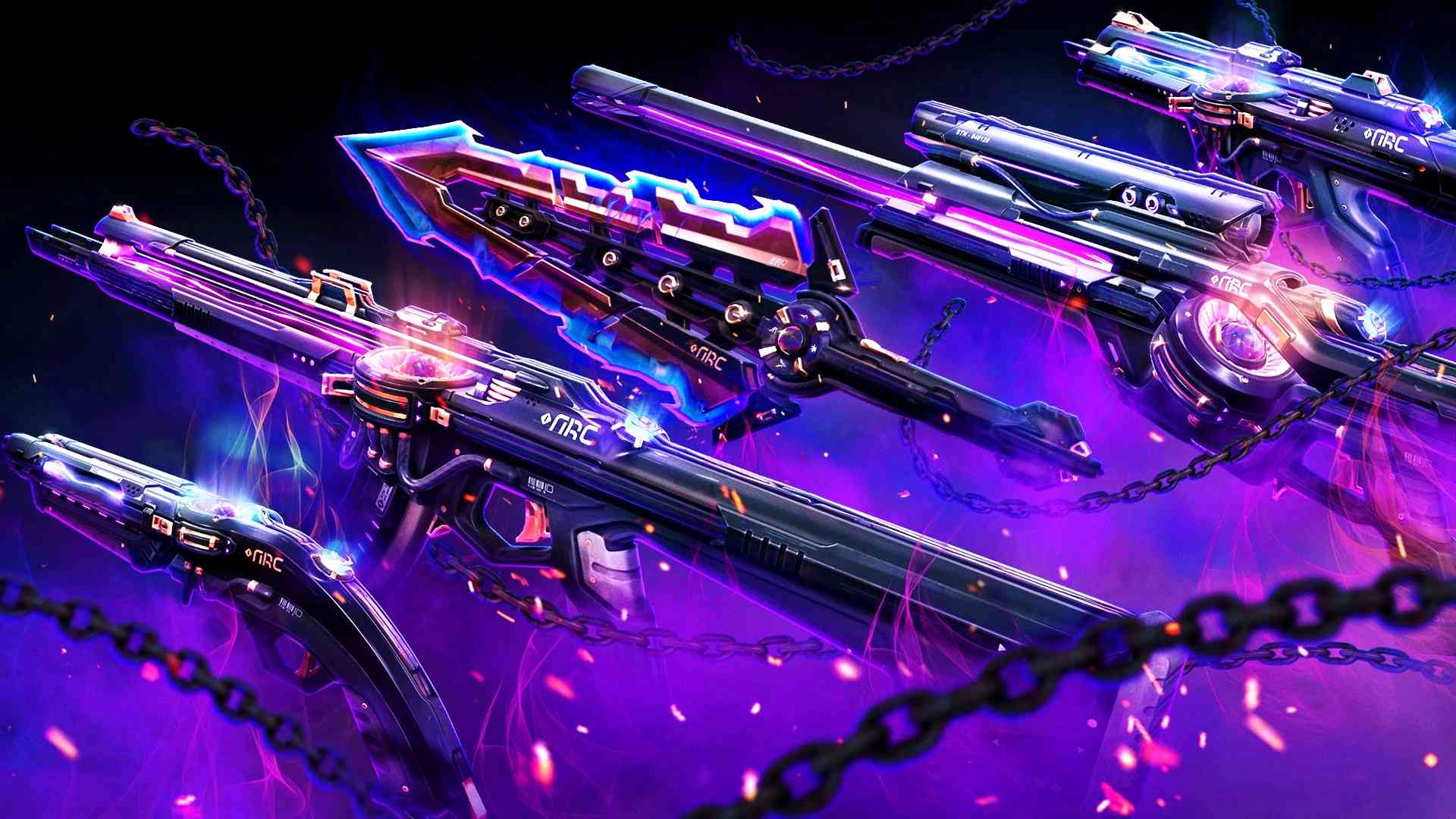
All Valorant skins, except those classified as Ultra Edition, are available at the Night Market. However, it’s important to note that players can’t change or reroll their Valorant Night Market skins. The skins offered during the Night Market are the only skins players can purchase that month, and if they want different skins, they’ll have to wait for the next Night Market.
In conclusion, the Valorant Night Market is an excellent opportunity for players to purchase exclusive weapon skins at a discounted price. It’s easy to access and offers six randomly generated skins for players to buy, including two old skins that can be traded in for a discounted price. However, players can’t change or reroll their Valorant Night Market skins.
So: Valorant offers players multiple ways to gain cosmetic items and build their arsenal. Whether playing the game, completing Agent Contracts, or purchasing skins in the in-game shop, players can choose how they want to develop their cosmetic collection. Valorant Cards play a crucial role in understanding the game, so it’s essential to familiarize oneself with them.
Trading Skins With Other Players
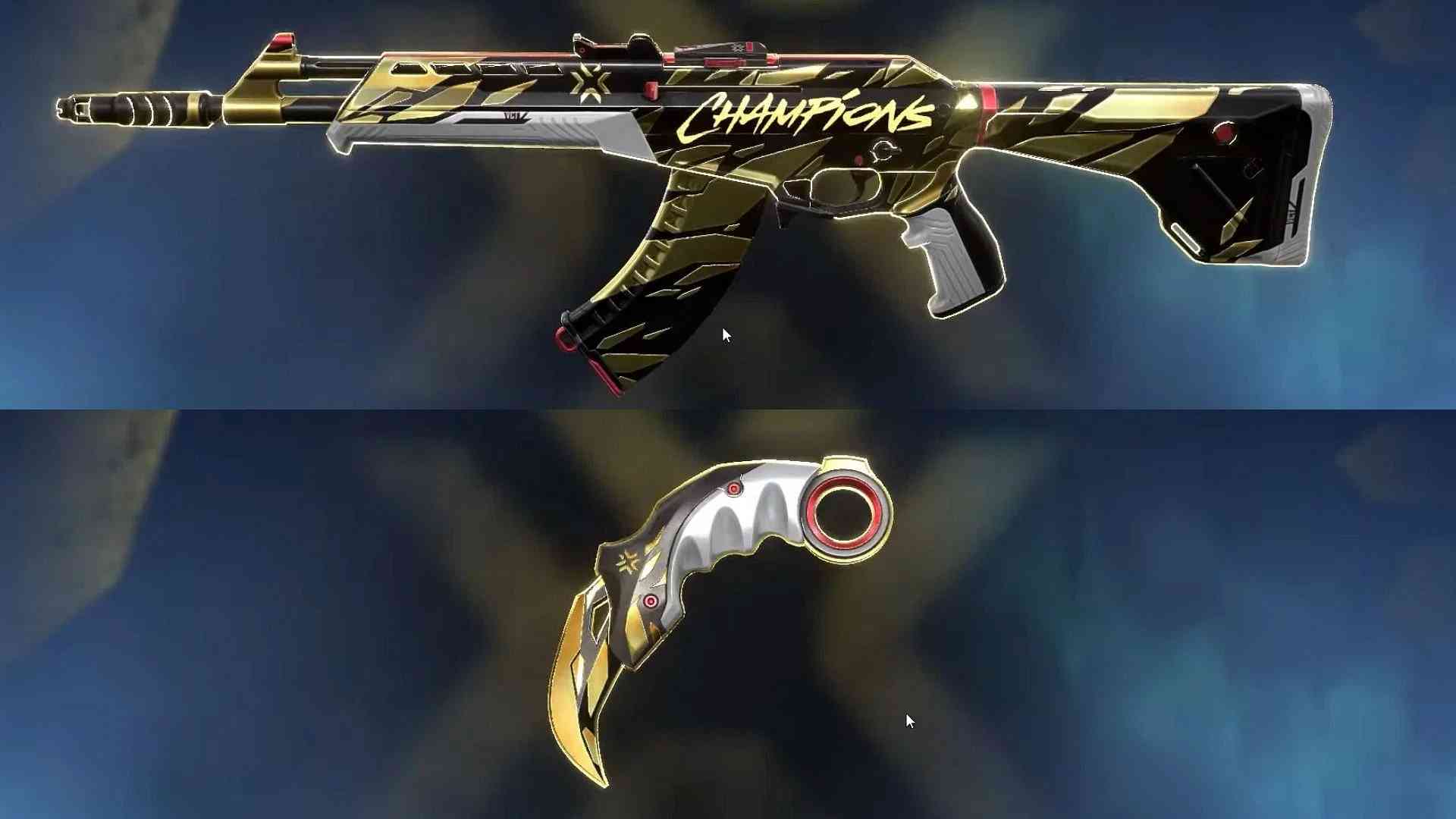
Riot Games has taken an unusual approach to the handling of Valorant skins. Currently, unlike in CS:GO, there is no way to exchange skins with other players. However, players have the opportunity to unlock content without having to pay for it through the Valorant EXP system and Agent Contracts. The EXP system allows players to gain agent skins, player cards, and other cosmetic items by completing contracts and daily missions.
While the limitation of being unable to trade skins with other players may be disappointing to some, it’s worth noting that there is a chance to get aesthetically pleasing skins without spending any money. In fact, some of the Agent skins unlocked through the EXP system look better than the ones available for a purchase. Overall, Riot Games seems to be experimenting with balancing gameplay and aesthetics. Their approach to Valorant skins is just one aspect of this effort.
What Are Valorant Points?
Valorant Points are the premium currency in Valorant, purchased with real-world money through the in-game store. They are primarily used to buy:
- Weapon Skins: Unlock new looks for your weapons.
- Bundles: Collections of skins and cosmetic items themed around a particular concept.
- Premium Battle Pass: Access to the premium track of the Battle Pass, offering more rewards.
- Radianite Points: Can be purchased with VP to upgrade skins.
How to Purchase Valorant Points
- Access the Store: Click on the small “V” icon or the VP symbol in the top-right corner of the main menu.
- Choose a VP Package: Select from various VP bundles that fit your budget.
- Select Payment Method: Options may include credit/debit cards, PayPal, and regional payment methods.
- Complete the Transaction: Follow the on-screen prompts to finalize your purchase.
VP Packages and Pricing
The cost of Valorant Points varies by region and the amount purchased. Generally, buying larger VP bundles offers better value per point.
How Skins Impact The Game
Nowadays, skins have become a form of virtual currency. Players trade skins among themselves for real and not-so-real-life money. The primary online marketplace where players can buy, trade and sell skins is Steam. However, many other smaller websites, including crypto sites, have been launched in the past few years.
Also, when asking for opinions, most players have never considered begging for skins. They may be obsessed with cosmetic items, but deliberately asking a teammate for them is a rarity. It works in CS:GO, for example, and the same goes for Valorant. So skins became important, but not a goal to strive for.
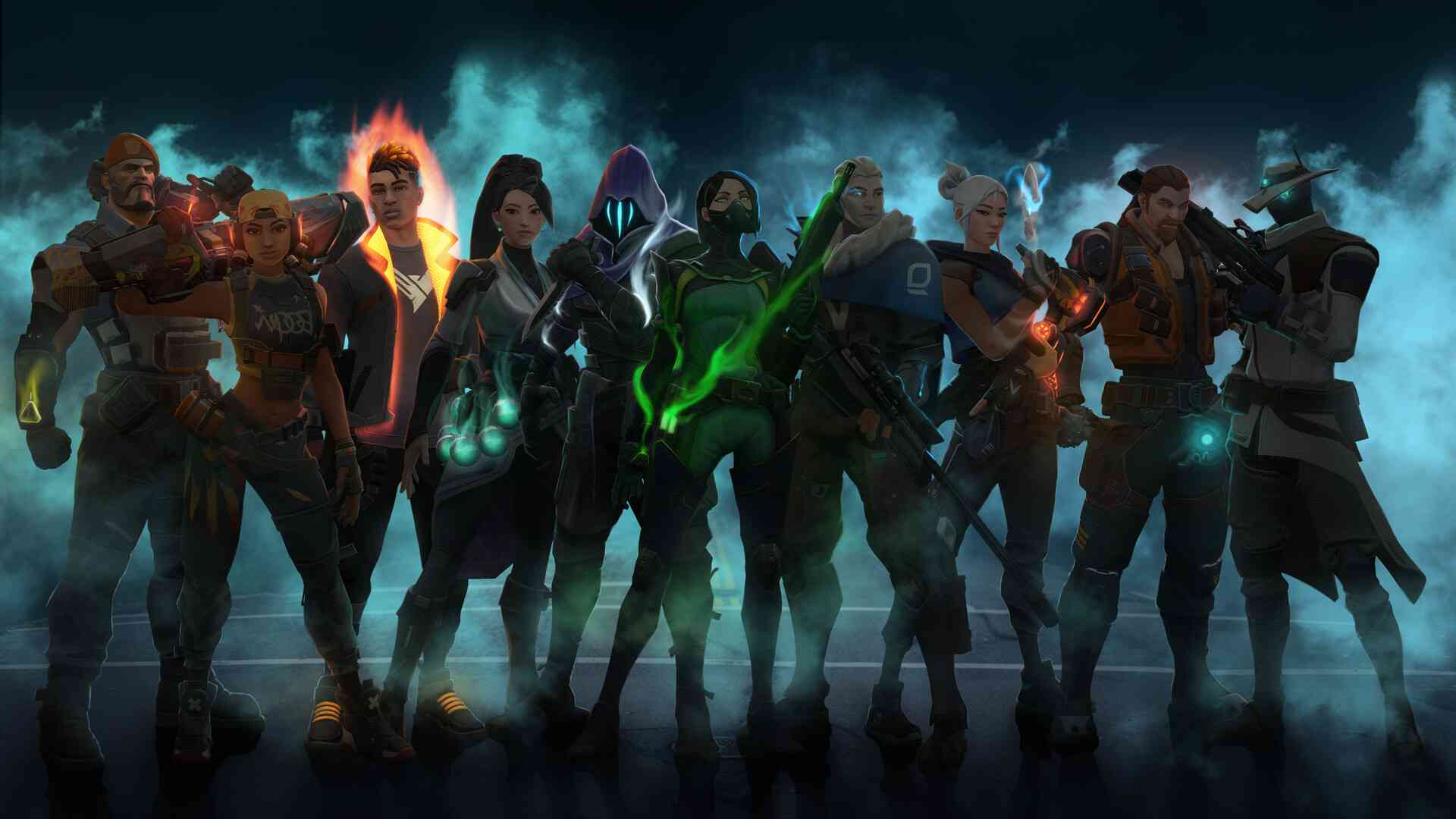
Conclusion:
- Valorant is a game with various cosmetic options for players to customize their in-game experience, called skins.
- Skins are categorized into five skin tiers (Select, Deluxe, Premium, Exclusive, and Ultra) based on quality and appearance.
- Prices for skins range from $10 to $30 per skin or $41 to $119 per bundle, depending on the tier.
- Skins can be obtained through Agent Contracts, Battle Passes, the EXP system, and Valorant Points in the In-game Shop or in the Night Market.


